Honor Award
Manassas Park Elementary School Landscape
Manassas Park, VA
Siteworks, Charlottesville, VA
Client: Manassas Park School District
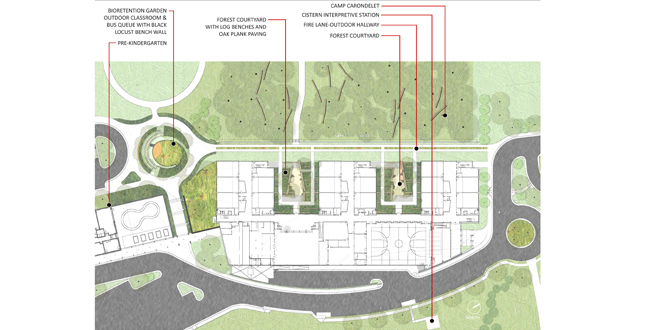
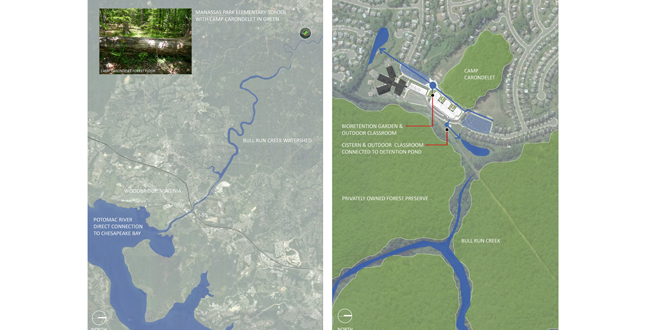
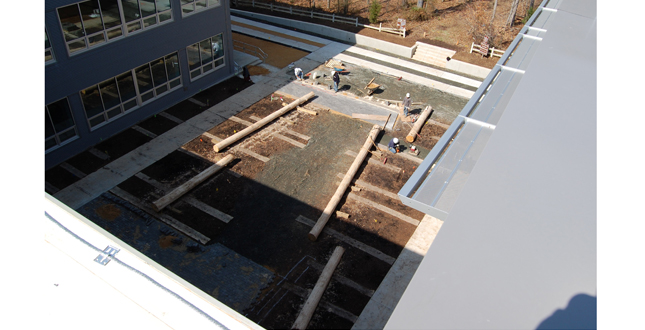 Close Me!
Close Me!Forest Court Under Construction. Project under constructions showing the infrastructure of White Oak log benches and plank paving. This groundplane infrastructure abstractly mimics the condition of the forest floor in the adjacent Camp Carondelet Preserve.
Download Hi-Res ImageImage: Siteworks
Image 3 of 16
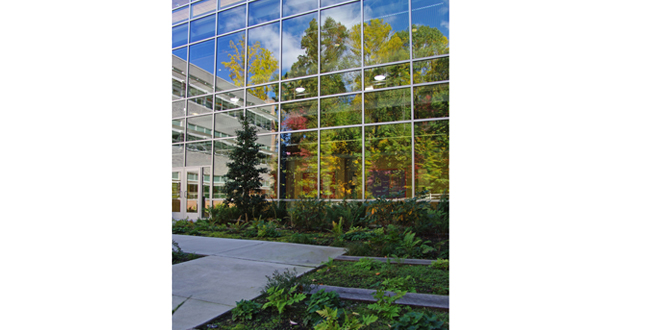 Close Me!
Close Me!Forest Court. Autumn After First full Growing Season.
Download Hi-Res ImageImage: Siteworks
Image 4 of 16
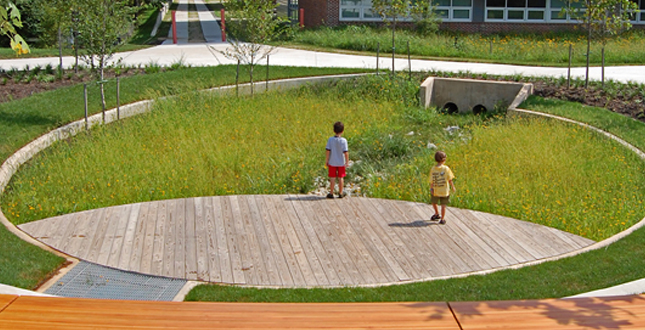 Close Me!
Close Me!Bioretention Garden with Black Locust Bench Wall
Download Hi-Res ImageImage: Siteworks
Image 5 of 16
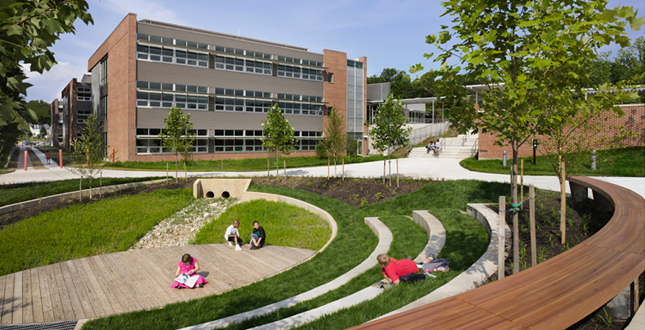 Close Me!
Close Me!Bioretention Garden with Black Locust Bench Wall
Download Hi-Res ImageImage: Siteworks
Image 6 of 16
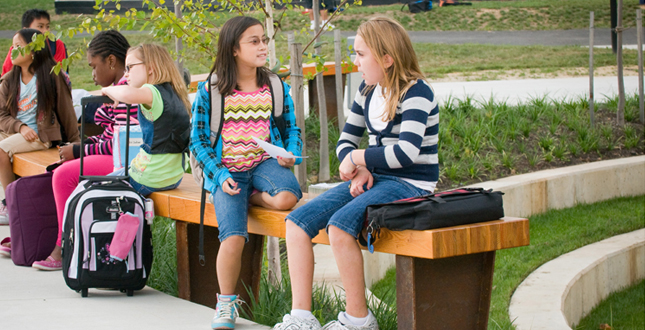 Close Me!
Close Me!Bioretention Garden with Black Locust Bench Wall
Download Hi-Res ImageImage: Siteworks
Image 7 of 16
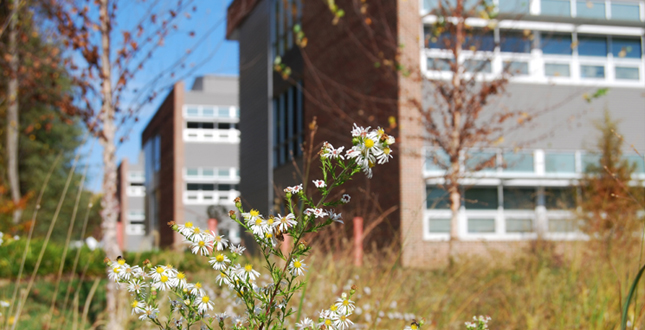
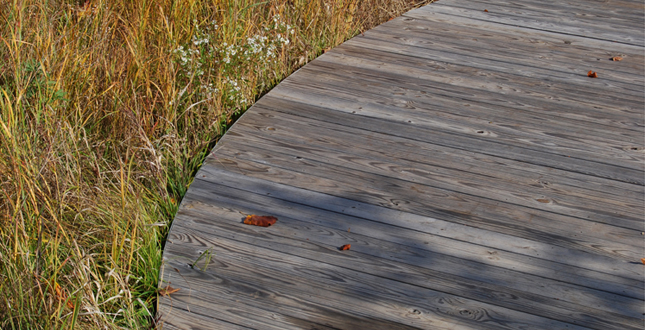
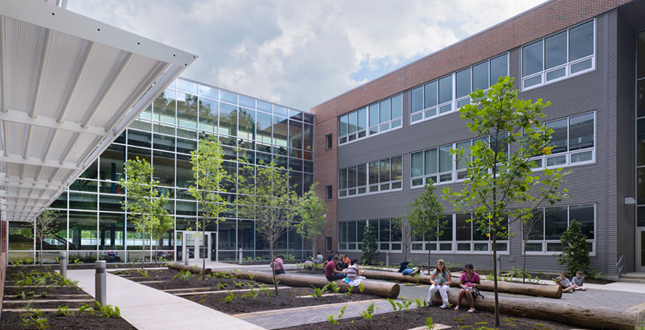
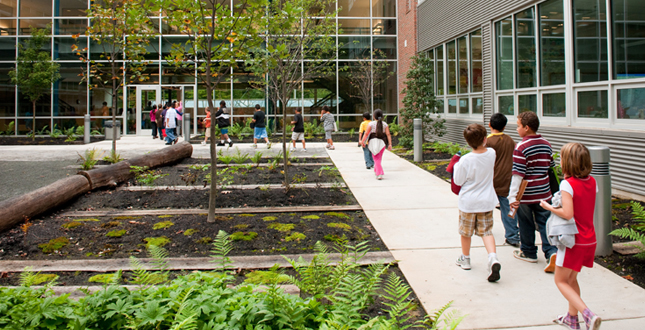
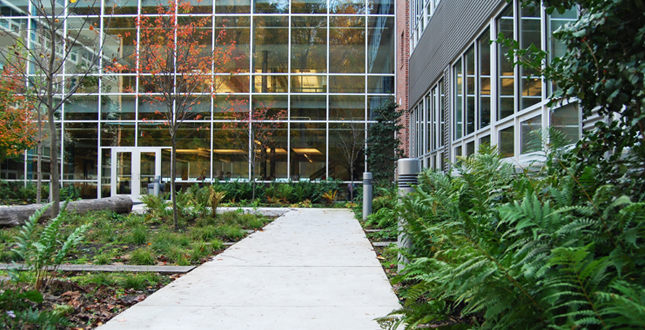 Close Me!
Close Me!Forest Court. Autumn After First Full Growing Season.
Download Hi-Res ImageImage: Siteworks
Image 12 of 16
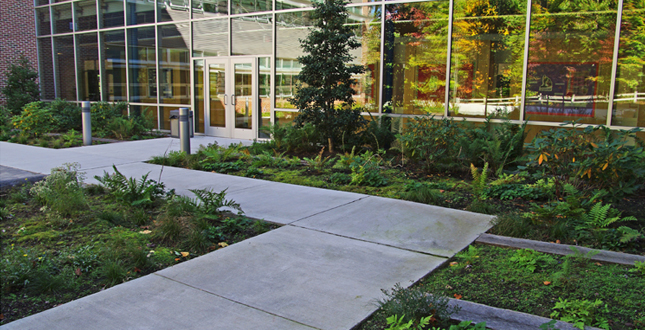 Close Me!
Close Me!Forest Court. Autumn After First Full Growing Season
Download Hi-Res ImageImage: Siteworks
Image 13 of 16
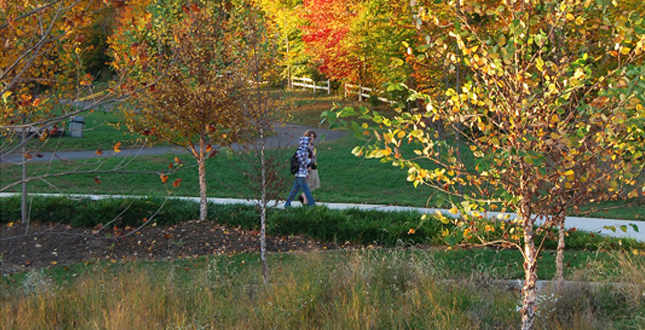
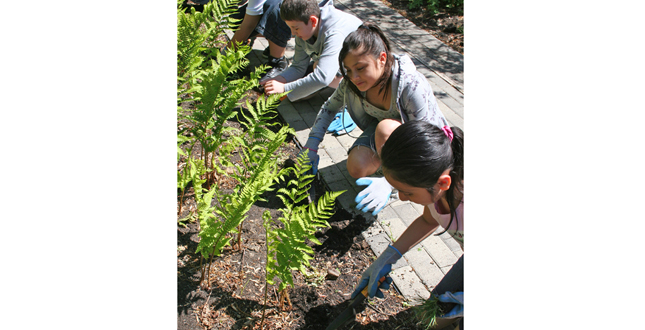 Close Me!
Close Me!Spring Planting Day with the Fifth Grade Classes. May 2010.
Download Hi-Res ImageImage: Siteworks
Image 15 of 16
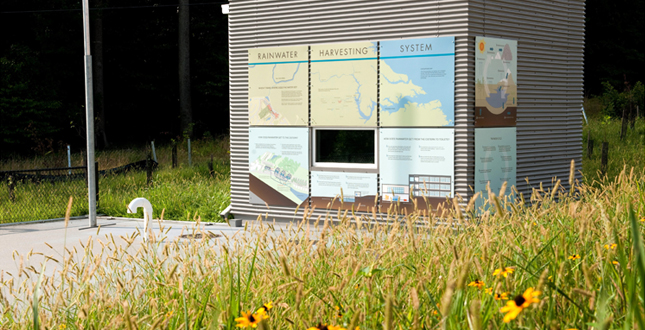 Close Me!
Close Me!Cistern Pumphouse and Integrated Watershed Diagrams-by Architects
Download Hi-Res ImageImage: Siteworks
Image 16 of 16
Project Statement
Studies have shown for years the benefits to student performance and health when schools are designed with fresh air, natural daylight and connections to the outdoors. MPES achieves those benefits while assuming the added responsibility of cultivating environmental stewards in their community of teachers, learners and parents. This LEED™ Gold certified project goes beyond sustainability checklists to create a school that challenges accepted paradigms in teaching and learning by actively involving the entire community in the design and ongoing operations of their school campus. Like Maurice Sendak’s Where the Wild Things Are, MPES elicits a sense of imagination, discovery and wonder through the relationship it creates between a human community and the surrounding woodlands and watersheds within which it lives.
Project Narrative
—2011 Professional Awards Jury
Manassas Park, Virginia, is a small, independent city surrounded by the affluent northern Virginia suburbs of Washington, D.C. Incorporated in 1975, the city cobbled together a series of pre-manufactured mobile buildings to create its first generation of school facilities from scratch. Ten years ago, the city began rebuilding all of its public schools—an enormous challenge in a city with an extremely low tax base.
The campus sits tightly surrounded by tract housing, private forest, and the historic landmark Camp Carondelet—forested winter quarters of the Confederacy's Louisiana Brigade between the first and second Manassas campaigns.
MPES serves a diverse population of students—many from immigrant families. The 2009-2010 enrollment includes sixty-eight percent non-white and twenty-six percent Limited-English-Proficient children. Forty-four percent receive free or reduced cost lunches. In the context of this rich diversity, the successful transformation of the school culture testifies to the vision and leadership of the Manassas Park City Schools administration.
Land Use & Community
Prior to design, the team evaluated two potential sites for the school. A site next to the existing lower elementary school site was selected, in part, because of the many infrastructure, site development, and transportation efficiencies it offered. In addition, the campus site was embedded within a residential neighborhood, enabling the school system to implement a system of “walking stops” and “bike trains” for neighborhood children.
All gathering spaces were designed for flexible use that accommodates public meetings and other community functions. Atypical for an elementary school, the gymnasium was built with a full-size basketball court to serve the community. To further support the community recreation programs, the gym also houses an office and storage for the Parks and Recreation Department.
At MPES, the most prominent of the shared-use facilities is Camp Carondelet—used alternately for education, exercise, recreation, and tourism. School parking lots serve as visitor parking for the camp, and the site was designed to invite camp visitors past the school courtyards on their approach to the camp entrance. This public porosity has proven uniquely refreshing, in an era when schools and schoolyards have become increasingly off-limits.
Site Description
The three-story school was built on an existing parking lot, and pushed tightly against the camp forest to preserve existing open space and create a suburban “school in the woods.” All existing trees were protected and moved with tree spades to the perimeter of the playfields, extending the benefits of the urban tree canopy to neighboring homes.
Ecological diversity is enhanced by a broad planting palette of native species, which shapes low-impact educational spaces. Hydric landscapes, previously absent, are featured in a manner giving children a new appreciation for water’s vital role in their lives. Broader disturbed areas were re-vegetated with native warm season grasses and wildflowers, echoing the savanna landscapes created by eastern woodland Native Americans.
The design team used the local ecosystem in a didactic manner whenever possible, both in the building and on the site. The school is organized into three “houses”—each house extensively themed around a season and each floor representing a corresponding level of the forest. Each classroom is named after a species commonly found in that season and place. In this way, children associate their homerooms with plants and animals rather than numbers.
From the broadest strokes to the smallest details this project is designed in reference to and in celebration of the natural and cultural environment within which it is located. Both the school building and the site are designed to be an expansion and expression of the forest ecosystem while integrating holistic systems for optimal management of water resources. This structure frames two outdoor forest classrooms that are built and planted to emulate the mixed deciduous woodland. The fire lane creates a seam between school and forest and an active outdoor hallway for changing classes that is punctuated at one end by the stormwater classroom and pick-up/ drop-off area that marks the daily threshold to and from the school. The design structure of the campus optimizes the relationships between indoors and outdoors, school and community, ecology and culture and challenges each member to be knowledgeable, responsible and creative in the ways that they inhabit the site and the planet.
Site Design
The mixed oak, poplar and maple woods of Camp Carondelet are marked by a continuous shady canopy and an intricate network of groundplane plants and decaying logs of fallen trees that continue to nourish the forest floor. This condition provided the basis for the design of the forest courtyards that are girded by an infrastructure of white oak wood plank paving and log benches that were salvaged from a nearby construction site. This initial structure is combined with additional porous pavings and native woodland plantings to structure outdoor learning habitats that will over time become contiguous with the adjacent forest. The stormwater garden and bus stop are also planted with native hydric species and are framed by amphitheater seating, a wood stage and a bench made from recycled steel and regionally harvested black locust. These spaces are designed to have small carbon footprints and require little to no gas-powered maintenance. They will eventually provide additional passive interior cooling through shading of building facades that will increase energy efficiency s the trees mature. These operate as outdoor labs for studying and cultivating native plants, studying climate and weather, telling stories and for exploring native flora and fauna. Within the first year of operations students discovered numerous toads, skinks and turtles taking up residence in the courtyards.
Cultivating Stewardship
MPES is fundamentally designed around the premise that people, especially children, cannot be expected to preserve or protect something they do not understand. As such, the school is conceived throughout as a teaching tool that shepherds children along a path of environmental stewardship. Inside and out, sustainable design is integrated with the elementary curriculum. Design decisions were made with the expressed goal of showcasing as many teachable moments as possible.
Interior extended learning spaces offer dramatic and surprisingly intimate views of the neighboring mixed oak forest, while elementary classrooms face shady moss- and fern-covered learning courtyards featuring "fallen" trees and other particularities of an eastern deciduous forest floor.
At MPES, not only are children offered exceptional views of the forest, they are invited to use the numerous exterior break-out spaces and to explore the piedmont landscape directly. The principal bio-retention area, for example, is detailed to serve as outdoor classroom, performance stage, and parent pick-up queue. In addition, this area has quickly become a popular location for informal gathering.
A comprehensive signage program reinforces each teachable moment by highlighting green building facts, demystifying sustainable building systems, and describing flora and fauna found in the adjacent forest.
In an ongoing effort to remain involved in the life of the school, the design team has committed to a yearly lecture on environmental issues in conjunction with a service day undertaken with the students, faculty and administration of the school. In May 2010, the lead Landscape Architect delivered a lecture to the entire fifth grade on the importance of forests to the planet which was followed by the planting of over 2000 plants by the fifth graders, their teachers and the design and construction team for the project.
Project Resources
Siteworks
Pete O’Shea, ASLA, Principal;Anne Russell;
John Meaney, ASLA; Jordan Phemister; Jenny Cox, ASLA; Sara Wilson
Architect: VMDO Architects
Robert Moje, Principal; Robert Winstead; Wyck Knox; Steve Davis; Kate Mora; Dan Morgan
Manassas Park City Schools
Superintendent: Thomas Debolt
Contractor: Hess Construction + Engineering Services
Civil Engineer: Bowman Consulting Group, Ltd.
Structural Engineer: Fox & Associates
Mechanical, Electrical and Plumbing Engineering: 2rw Consultants
Commissioning Agent: Paul McNally;
Sebesta Blomberg
Food Service Consultant: EIS, Inc.






